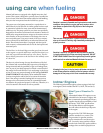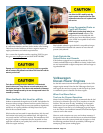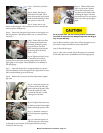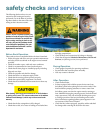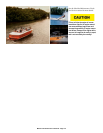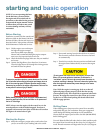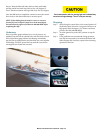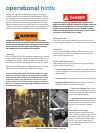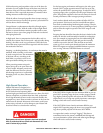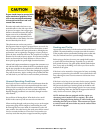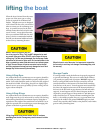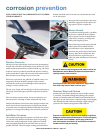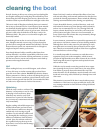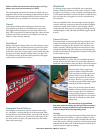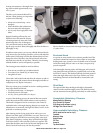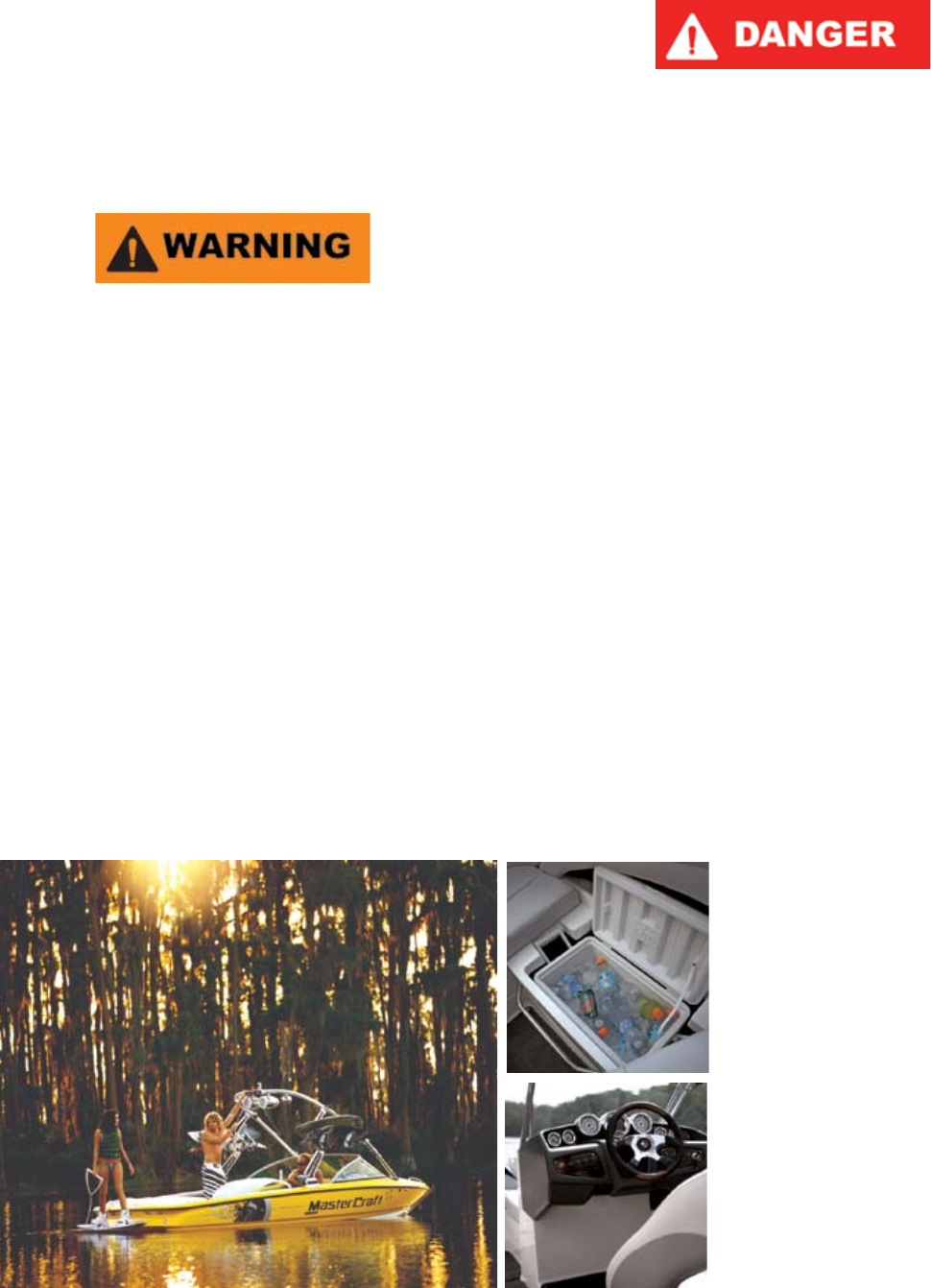
operational hints
MasterCra urges all who will be operating the boat to seek
certied instruction from the local boating authorities. is sec-
tion is designed to present the most basic operational principles.
It is NOT intended to cover all conditions encountered during
operation. erefore, the principles presented in this Owner’s
Manual are limited to the facts related directly to the operation
of the boat, while the responsibility for the proper application of
these principles belongs with the boat owner and/or operator.
Adding additional ballast to a MasterCraft boat is not recom-
mended, and can result in impaired visibility, diminished handling
characteristics and instability when operating your boat, and may
result in potential structural and/or engine damage to the boat,
which damage will not be covered by your warranty.
Loading
Never overload the boat. e maximum weight capacity as listed
on the certication plate includes all items added to the boat (in-
cluding persons and gear). Proper distribution of weight is criti-
cal to boat performance. Allocate the load as evenly as possible.
e maximum weight capacity includes lled, factory-installed
ballast tanks and/or ballast bags, added by the customer.
Note that adding ballast bags reduces the number of people
and the amount of gear that can be added. Failure to adhere
to the total maximum capacity may result in too much strain
on the drive train or may sink the boat. is is not covered
under warranty! See the Common Sense Approach section of
this Owner’s Manual regarding weight, including calculations
for ballast and gasoline.
Information regarding the maximum number of people and/or
additional weight to the boat is included in the Guide to Individual
Models section of this Manual. It is the boat operator’s respon-
sibility to ensure that the boat is never overloaded. Too much
additional weight may cause the boat to overturn or sink, which
can result in serious bodily injury or death.
Emergencies
Know how to use and spot distress signals, and to oer assis-
tance if possible. Remember, you may need assistance some day.
Courtesy
Always respect the rights of others on the water. Keep wide
when passing, slow down in crowded areas, be alert and be
aware of your wake and wash.
First Time Operation
When taking to the water for the rst time, you must keep in
mind a few general guidelines:
• Practice makes perfect! Start in calm water with no wind or
current and plenty of room until you get the feel for the boat
and its controls.
• Proceed slowly! Give yourself time to think, react and maneuver.
• Recognize outside forces! Check the wind direction and
velocity, as well as water currents and waves.
• Have a crew on hand! Have friends
or family ready with fenders, lines and a
boat hook to assist you when docking, as
well as launching and loading.
• Remember that a boat is not an au-
tomobile! Boats cannot be maneuvered
and stopped like a car. Boats steer from
the stern (rear) and have no brakes.
Basic Maneuvering
Steering response is dependent upon
three (3) factors: rudder position, motion
and throttle. While high-speed maneu-
vering is relatively easy and takes little
practice, slow-speed maneuvering is
far more dicult and requires time and
practice to master.
MasterCraft 2009 Owner’s Manual - Page 10-1



